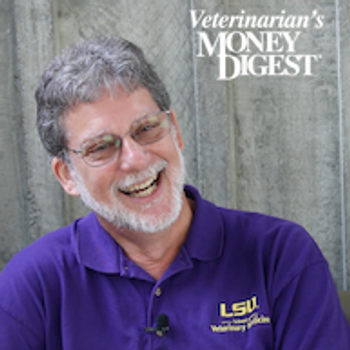
John Owens, veterinary attorney at the Law Offices of John Owens, LLC., explains the importance of having an attorney who understands veterinary law.

John Owens, veterinary attorney at the Law Offices of John Owens, LLC., explains the importance of having an attorney who understands veterinary law.

The organization has a mission to support women in seeking and achieving leadership, policy, and decision-making roles in the veterinary profession.

Why is self-assessment the vital first step toward finding a new career?

Veterinary teamthere's more to it than "open door, walk through." Learn the benefits of the nonverbal messages you could be sending.

Although veterinary hospice centers are sparse, a lot of the end-of-life care provided to patients can be done in the homes, says Kathleen Cooney, DVM, MS, CHPV, an animal hospice consultant.

What are some common motility disorders in veterinary patients?

Is there a risk of overvaccination in pets today?

Why would a social worker be helpful in your veterinary practice?

Andrew Mackin, BVMS, MVS, DVSC, DACVIM, professor and department head at Mississippi State University College of Veterinary Medicine, explains that although azathioprine is a drug that's been around for a very long time it is not without side effects.

Expert status isnt a requisite for getting most of the diagnostic information you need, says imaging specialist Dr. Rachel Pollard.

Joseph Taboada, DVM, DACVIM, professor and associate dean at Louisiana State University School of Veterinary Medicine, shares what he and his colleagues at LSU are doing to help support the well-being of their veterinary students.

These types of skin diseases fall into 2 categories.

Over the last 10 or 15 years we've seen both an increased number of veterinarians who are interested in delivering dialysis and other extracorporeal therapies.

We spoke with Larry DeLuca, EdD, MD, about his camp for medical professionals, Happy Doc Summer Camp.

Most veterinary clients dont appreciate surprises when it comes to their pets dental proceduresespecially when the revelation is permanent and costs extra. Here are some steps you can take to avoid them in your practice.

The most commonly used form in veterinary medicine is laser therapy.

"The newest hip topic is what we call OPP, or outpatient parvovirus," says Justine Lee, DVM, DACVECC, DABT, founder of VETgirl.

This clinic in Door County, Wisconsin, with its clean lines and creative roofline, would make architect Frank Lloyd Wright proud.

Less is more in many of these cases.

Cough in dogs is absolutely one of the most common things that critical care veterinarians see.

Brenna Fitzgerald, DVM, DABVP (Avian Practice), associate veterinarian at the Medical Center for Birds in Oakley, California, gives advice for veterinarians faced with clients who own pet chickens.

Bill Schroeder, senior vice president of InTouch Practice Communications, explains what you need to know about Facebook's new algorithm.

We tend not use the word "mutation" anymore, we say “DNA variance,” but that variation is good.

Amy L. Pike, DVM, DACVB, chief of the Behavior Medicine Division at the Veterinary Referral Center of Northern Virginia, says when dealing with pain, veterinarians need to use a multimodal treatment approach.

Because of how electroceuticals function throughout the brain, it reduces stress level.

A program that offers support for both clients and staff is extremely important.

Practice pride keeps teammates satisfied.

Just one team member can spark a full on conversion in the clinic.

Do cats have as many orthopedic problems as dogs?

One of the things that clients are looking for in in their apology, in addition to compassion and understanding that they've been injured, is honesty.